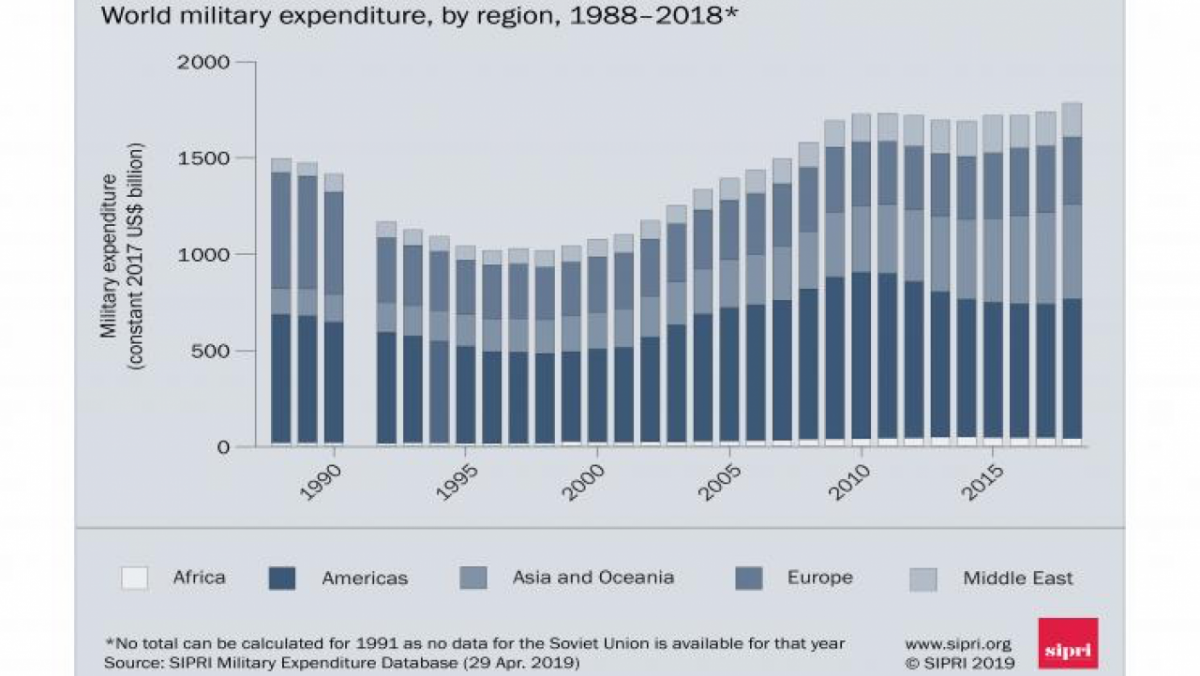
Ukraine's military expenditure grew by 21% to $4.8 billion in 2018.
Total world military expenditure rose to $1.8 trillion in 2018, representing an increase of 2.6% from 2017, according to new data from the Stockholm International Peace Research Institute (SIPRI).
Read alsoUkraine ranks 12th among 25 largest arms exporters – SIPRI
The five biggest spenders in 2018 were the United States, China, Saudi Arabia, India and France, which together accounted for 60% of global military spending.
Military spending by the USA increased for the first time since 2010, while spending by China grew for the 24th consecutive year.
Total global military spending rose for the second consecutive year in 2018, to the highest level since 1988 – the first year for which consistent global data is available. World spending is now 76% higher than the post-cold war low in 1998.
World military spending in 2018 represented 2.1% of global gross domestic product (GDP) or $239 per person.

"In 2018 the USA and China accounted for half of the world's military spending," says Dr. Nan Tian, a researcher with the SIPRI Arms and Military Expenditure (AMEX) programme. "The higher level of world military expenditure in 2018 is mainly the result of significant increases in spending by these two countries."
Military spending in South America rose by 3.1% in 2018. This was mainly due to the increase in Brazilian spending (by 5.1%), the second increase in as many years.
Military expenditure in Africa fell by 8.4% in 2018, the fourth consecutive annual decrease since the peak in spending in 2014. There were major decreases in spending by Algeria (–6.1%), Angola (–18%) and Sudan (–49%).
Military spending by states in the Middle East for which data is available fell by 1.9% in 2018.
Total military expenditure by all 29 North Atlantic Treaty Organization members was $963 billion in 2018, which accounted for 53% of world spending.
The largest absolute increase in spending in 2018 was by the USA ($27.8 billion), while the biggest decrease was by Saudi Arabia (–$4.6 billion).

